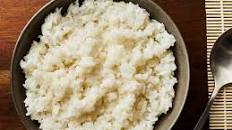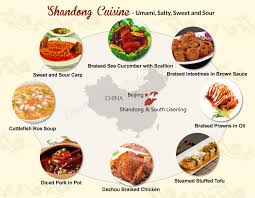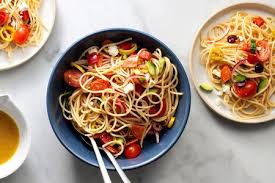Authentic Sushi Rice Recipe: Elevate Your Homemade Sushi Game

The Perfect Sushi Rice Recipe
Sushi is a beloved Japanese dish that relies heavily on the quality and flavour of its rice. The key to making delicious sushi at home lies in preparing the rice correctly. Here’s a simple yet authentic sushi rice recipe that will elevate your homemade sushi game:
Ingredients:
- 2 cups short-grain Japanese rice
- 2 1/4 cups water
- 1/4 cup rice vinegar
- 2 tablespoons sugar
- 1 teaspoon salt
Instructions:
- Rinse the rice under cold water until the water runs clear. This helps remove excess starch.
- In a medium saucepan, combine the rinsed rice and water. Let it soak for 30 minutes.
- Cover the saucepan with a tight-fitting lid and bring the rice to a boil over high heat. Reduce the heat to low and simmer for 15 minutes.
- Remove the saucepan from heat and let it stand, covered, for another 10 minutes to steam the rice.
- In a small saucepan, combine the rice vinegar, sugar, and salt. Heat over low heat until the sugar dissolves.
- Transfer the cooked rice to a large bowl and gently fold in the vinegar mixture using a wooden spatula. Be careful not to mash the grains.
- Cool the seasoned rice to room temperature before using it to make sushi rolls or nigiri.
Now that you have mastered this sushi rice recipe, you are one step closer to creating restaurant-quality sushi in your own kitchen. Enjoy experimenting with different fillings and techniques to craft your perfect homemade sushi creations!
Bon appétit!
Mastering Sushi Rice: 9 Benefits of the Perfect Recipe for Authentic Japanese Flavours
- Authentic Japanese flavours
- Simple and easy-to-follow recipe
- Elevates homemade sushi dishes
- Enhances the overall taste of sushi
- Customizable to suit personal preferences
- Uses basic ingredients that are readily available
- Creates the perfect texture for sushi rice
- Allows for creative experimentation with fillings and presentations
- Impresses friends and family with your sushi-making skills
Sushi Rice Challenges: Six Drawbacks to Consider Before Preparing Your Own
- Requires specific short-grain Japanese rice, which may not be readily available in all supermarkets.
- Rinsing the rice can be time-consuming and repetitive to ensure the water runs clear.
- The soaking and cooking process for sushi rice requires attention to detail and precise timing.
- Seasoning the rice with vinegar, sugar, and salt can alter the taste for those who prefer plain rice.
- Cooling the seasoned rice to room temperature adds extra waiting time before using it for sushi preparation.
- Overmixing or handling the cooked rice too vigorously can result in a mushy texture, affecting the overall sushi experience.
Authentic Japanese flavours
The sushi rice recipe offers the pro of authentic Japanese flavours that elevate the overall taste of homemade sushi. By following this recipe, you can achieve the perfect balance of sweetness and tanginess in the rice, characteristic of traditional Japanese sushi. The use of rice vinegar, sugar, and salt in precise measurements ensures that every bite of sushi showcases the true essence of Japanese culinary artistry. Embracing these authentic flavours adds a delightful dimension to your homemade sushi experience, transporting your taste buds to Japan with each delicious mouthful.
Simple and easy-to-follow recipe
This sushi rice recipe stands out for its simplicity and ease of following. With clear instructions and minimal ingredients, even novice chefs can confidently prepare delicious sushi rice at home. The straightforward steps make it accessible to anyone looking to elevate their homemade sushi experience without feeling overwhelmed. Whether you’re a seasoned cook or just starting your culinary journey, this recipe’s user-friendly nature ensures a seamless and enjoyable cooking process, resulting in perfectly seasoned rice for your favourite sushi dishes.
Elevates homemade sushi dishes
By following this sushi rice recipe, you can elevate your homemade sushi dishes to a whole new level. The perfectly seasoned and textured rice serves as the foundation for delicious sushi rolls and nigiri. Its authentic flavour and consistency will enhance the overall taste and presentation of your homemade sushi, making each bite a delightful experience. Mastering this recipe will allow you to create restaurant-quality sushi in the comfort of your own home, impressing friends and family with your culinary skills and attention to detail.
Enhances the overall taste of sushi
The meticulous preparation of sushi rice, as outlined in the recipe above, plays a crucial role in enhancing the overall taste of sushi. The combination of perfectly cooked rice seasoned with a delicate balance of rice vinegar, sugar, and salt creates a harmonious flavour profile that complements the various fillings and toppings used in sushi dishes. The subtle tanginess and sticky texture of the seasoned rice not only provide a cohesive base for the ingredients but also elevate the dining experience by adding depth and authenticity to each bite of sushi. Mastering the art of sushi rice preparation is key to achieving a truly delicious and satisfying sushi dish that delights the palate with every mouthful.
Customizable to suit personal preferences
Sushi rice recipes offer a wonderful pro in their customizability, allowing individuals to tailor the flavours to suit their personal preferences. Whether you prefer a slightly sweeter rice vinegar seasoning or a more subtle hint of salt, adjusting the ingredients in the recipe enables you to create sushi rice that aligns perfectly with your taste buds. This flexibility not only enhances the overall dining experience but also encourages creativity in exploring different flavour profiles, making each homemade sushi dish uniquely yours.
Uses basic ingredients that are readily available
The beauty of this sushi rice recipe lies in its simplicity and accessibility. By using basic ingredients that are readily available, such as short-grain Japanese rice, water, rice vinegar, sugar, and salt, anyone can embark on the journey of creating delicious homemade sushi. This pro not only makes the recipe easy to follow for beginners but also ensures that sushi lovers can whip up a batch of authentic sushi rice without the need for any specialized or hard-to-find ingredients.
Creates the perfect texture for sushi rice
Creating the perfect texture for sushi rice is essential in achieving authentic and delicious homemade sushi. This sushi rice recipe ensures that the grains are cooked to perfection, with just the right amount of stickiness to hold the sushi together while still retaining a fluffy and light consistency. The careful balance of water, vinegar, sugar, and salt in this recipe results in a harmonious blend of flavours that complements the overall taste of the sushi. By following this recipe, you can be confident that your sushi rice will have the ideal texture that is essential for a truly satisfying sushi experience.
Allows for creative experimentation with fillings and presentations
The beauty of mastering a sushi rice recipe lies in the creative freedom it offers for experimenting with various fillings and presentations. With the perfect base of seasoned rice, sushi enthusiasts can let their imagination run wild, combining traditional ingredients with innovative twists to create unique flavour profiles. Whether opting for classic combinations or daring fusion creations, the versatility of sushi rice opens up a world of possibilities for crafting visually stunning and deliciously satisfying sushi rolls and nigiri.
Impresses friends and family with your sushi-making skills
Elevate your culinary prowess and impress friends and family with your sushi-making skills using this authentic sushi rice recipe. By mastering the art of preparing perfectly seasoned rice, you can create delicious homemade sushi that rivals that of a professional sushi chef. The satisfaction of crafting beautiful and flavourful sushi dishes will not only delight your loved ones but also showcase your dedication to creating authentic Japanese cuisine. Embrace the opportunity to showcase your newfound skills and share the joy of homemade sushi with those closest to you.
Requires specific short-grain Japanese rice, which may not be readily available in all supermarkets.
When following this sushi rice recipe, one potential drawback is the necessity of using specific short-grain Japanese rice, which might not be easily found in all supermarkets. This requirement can pose a challenge for individuals who do not have access to specialty Asian grocery stores or markets that stock this particular type of rice. In such cases, it may be worth exploring alternative rice varieties that are more readily available locally while still aiming to achieve a similar texture and flavour profile for the sushi rice.
Rinsing the rice can be time-consuming and repetitive to ensure the water runs clear.
Rinsing the rice for the sushi recipe can present a con as it may be perceived as time-consuming and repetitive to achieve the desired clarity of the water. This step, while crucial for removing excess starch and ensuring the right texture of the rice, can be seen as a tedious task for some home cooks. However, investing time in this process is essential to guaranteeing the perfect consistency and flavour of the sushi rice, ultimately contributing to a more authentic and enjoyable sushi-making experience.
The soaking and cooking process for sushi rice requires attention to detail and precise timing.
The soaking and cooking process for sushi rice demands meticulous attention to detail and precise timing, making it a challenging aspect of preparing this quintessential Japanese dish. From rinsing the rice until the water runs clear to ensuring the grains are cooked to perfection without becoming mushy, each step requires careful monitoring and adherence to specific instructions. However, mastering this crucial stage is essential in achieving the desired texture and flavour of the sushi rice, ultimately contributing to the overall authenticity and quality of homemade sushi creations.
Seasoning the rice with vinegar, sugar, and salt can alter the taste for those who prefer plain rice.
Seasoning the sushi rice with vinegar, sugar, and salt, while essential for traditional sushi flavour, may not appeal to those who prefer plain rice. The added tanginess and slight sweetness from the vinegar and sugar, combined with the hint of saltiness, can significantly alter the taste profile of the rice. For individuals who enjoy the simplicity and purity of plain rice, this seasoned sushi rice recipe may not align with their preferences. However, there are variations and adaptations of sushi rice recipes available that cater to different taste preferences and dietary restrictions, allowing everyone to enjoy sushi in a way that suits their palate.
Cooling the seasoned rice to room temperature adds extra waiting time before using it for sushi preparation.
One drawback of the sushi rice recipe is the additional waiting time required to cool the seasoned rice to room temperature before using it for sushi preparation. This waiting period can test one’s patience, especially when craving freshly made sushi. However, this crucial step is essential for allowing the rice to absorb the flavours of the vinegar mixture fully, resulting in a balanced and authentic taste that is characteristic of traditional sushi. While it may delay immediate gratification, the wait is well worth it for those seeking an authentic and delicious sushi experience.
Overmixing or handling the cooked rice too vigorously can result in a mushy texture, affecting the overall sushi experience.
Overmixing or handling the cooked sushi rice too vigorously can lead to a mushy texture, which ultimately impacts the overall sushi experience. It is crucial to handle the rice with care and gentleness when incorporating the vinegar mixture to avoid breaking down the grains and creating a sticky, unappealing consistency. By being mindful of how the rice is treated post-cooking, one can preserve its desired texture and ensure that each bite of sushi delivers the perfect balance of flavours and textures for a truly enjoyable dining experience.



